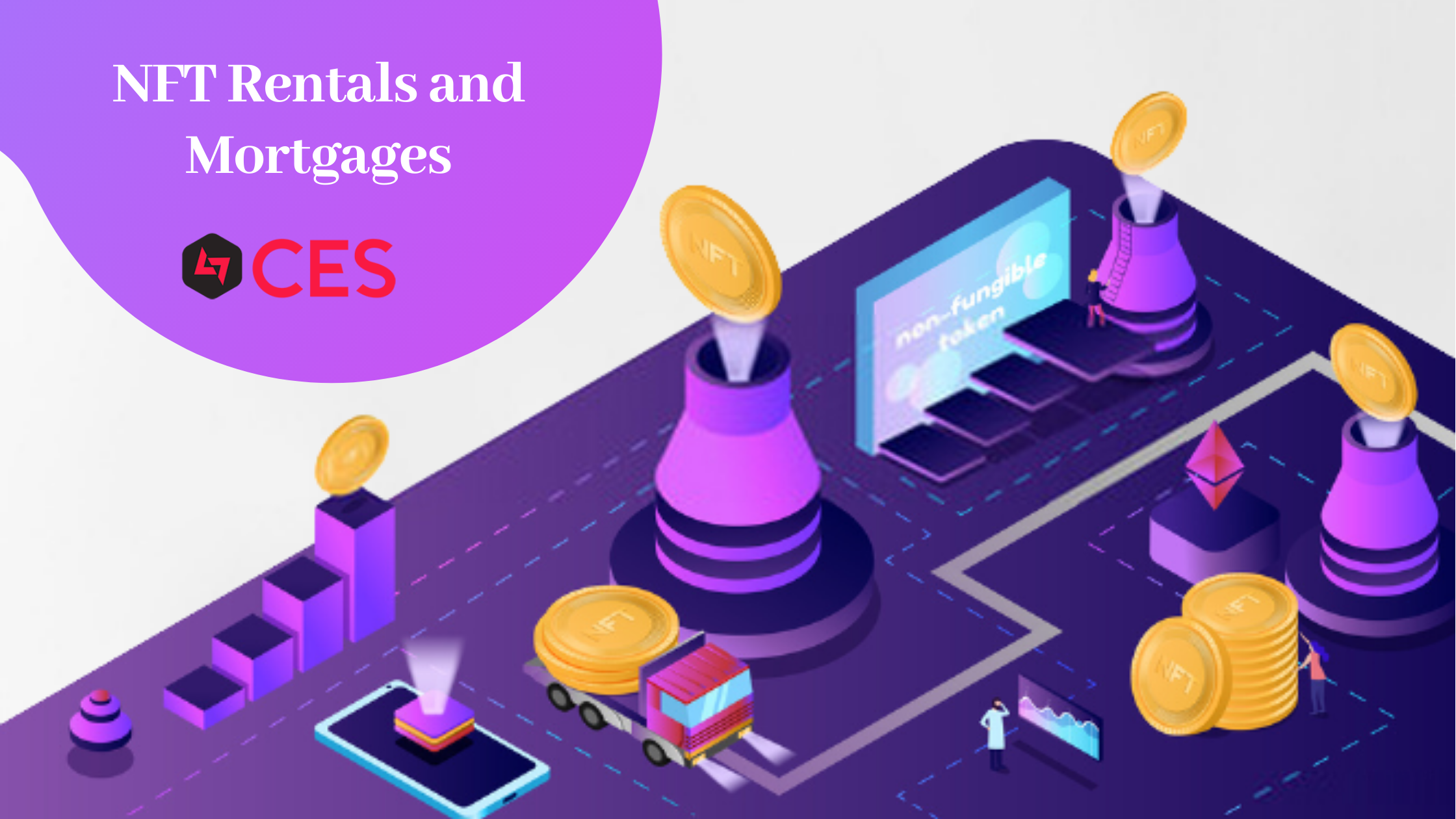The technology is augmenting each day to the extent of matching the virtual world with the real world. One such state-of-the-art technology in the field of cryptocurrency and blockchain is NFT rental and mortgages. The ERC-2615 standard proposes an extension to the ERC-721 standards to lend a hand in rental and mortgage functions. These functions are mandatory for non-fungible tokens to replicate the authentic property, similar to the one in the real world. This informative blog yearns to make you stay updated with the novel functions of NFT rental and mortgage – Keep reading!
A Precise Abstract:
The extended standards of ERC-721 is the ERC-2615, which comprises add-on responsibilities such as the right of tenants to facilitate NFTs and the right of lien. This brand-new standard ERC-2615 allows NFT owners to rent the tokens and bring in the mortgage through collateralizing their non-fungible tokens.
For instance, ERC-2615 can match,
- Digital items (in-game assets, virtual masterpieces, etc.).
- Physical items (home and other items)
- IPR – Intellectual Property Right
- DAO membership tokens.
The most imperative thing to look after is that it allows NFT developers to incorporate the ERC-2615 standard effortlessly. This is due to the fact that it is entirely backwards-compatible with the former standard ERC-721.
The Herculean Implementation:
It was very arduous to implement the NFT rentals and mortgages function with the ERC-721 standard as it has the owner’s role defined. Presently, a security deposit is requisite for trustless renting with former standard, and security lockup within a contract is mandatory whenever an individual prefers to mortgage their property in ERC-721. The monitoring and streamlining of these relationships must be completed separately from the standard.
This measure eradicates the conventional by implementing basic rights of tenants and liens. By unifying the aforementioned functions, developers could simply incorporate rental and mortgage functions for the required applications.
The Rights Of Roles:
ERC-2615 standard suggests three roles. It encompasses the lien-holder, the owner, and the user. The rights of each role are discussed below.
A lien-holder owns the right to
- Transfer the user role
- Transfer the owner role
An owner holds the right to
- Transfer the owner role
- Transfer the user role
A user holds the right to
- Transfer the user role
The Nvel Standard ERC-2615’s Extensions:
The following extensions assist the developers in building with this standard.
- ERC-721 Compatible Functions: It enables ERC-2615 compatible with ERC-721 standards. By utilizing certain functions, developers could make use of the existing tools for ERC-721.
- Enumerable: It is similar to the one used in the ERC-721 standard.
- Metadata: It is also similar and comparable to the existing extension of ERC-721.
The Working Of NFT Rentals And Mortgages:
We will make you comprehend both the NFT Rentals And Mortgages functions so that you could have a clear mindset of how it works.
Mortgage Working:
Consider person A owns an NFT and wishes to draw a mortgage. Consider person B wishes to gain interest by lending tokens to person A. Then,
- Person A ratifies the setting of a lien for the NFT owned.
- A raises a loan request to the mortgage contract.
- Person B fills the raised request and transfers tokens to the contract. The lien will be set on NFT by the contract.
- A can withdraw the tokens from the contract.
- Person A has to register the repayment (Anyone can repay).
- If the repayment is accurate and not delayed, person B can complete the agreement.
- If the repayment is delayed and not paid on time, B can revoke the agreement. B can now implement lien and will be allowed to claim the ownership of the NFT.
Rental Working:
Consider person A owns NFTs and wishes to rent it. Consider person B who wishes to lease the NFTs. Then,
- Person A ratifies the setting of a tenant-right for the NFT owned.
- Person A raises a rental request to the rental contract.
- Person B fills the raised request, and the right to use the NFT is transferred to B. The tenant-right will be set, and A becomes ineligible to transfer the right to utilise NFT.
- Person B has to register the rent (Anyone can pay the rent).
- A can withdraw the rent from the contract.
- If the payment of rent is accurate and not delayed, A can complete the agreement.
- If the payment of rent is delayed and not paid on time, A can revoke the agreement. A can now implement tenant-right and will be the right to utilise NFT.
Merits Of NFT Rentals And Mortgages:
Along with the prime merits of NFT rental and mortgages, get to know who it outsmarts ERC-721 standard.
- No Security Lockup: Previously, in ERC-721, it was mandatory to deposit funds as a matter of security. In this ERC-2615 standard, no such deposits are required since it natively supports rental and tenant functions.
- No Ownership Escrow: Whenever opting for a mortgage, it is essential to transfer NFTs as collateral. ERC-721 cannot utilise NFT under escrow as it hurts the utility of the tokens. In contrast, the ERC-2615 standard permits NFTs to play the collateral role and can be used at the same time.
- Simple Integration: It literally makes the integration of rental and mortgage functionalities very easy when compared to the ERC-721 standard.
The Bottom Line:
The pace of NFTs in unleashing its potential in each industry is enhancing progressively, and the wonders are yet to be discovered. Undoubtedly, ERC-2615 is an improved standard that plays a role ahead of the conventional ERC-721 standard. Also, the novel functionalities utilised in the ERC-2615 standard have similarities with ERC-721 standards. This permits the developers to swiftly adopt the standards.
Hence Cryptocurrency Exchange Script takes immense pleasure in making you stay on track by updating you with the trending crypto & blockchain concepts then and there. Reach out to our blog to dive deep into such concepts.
